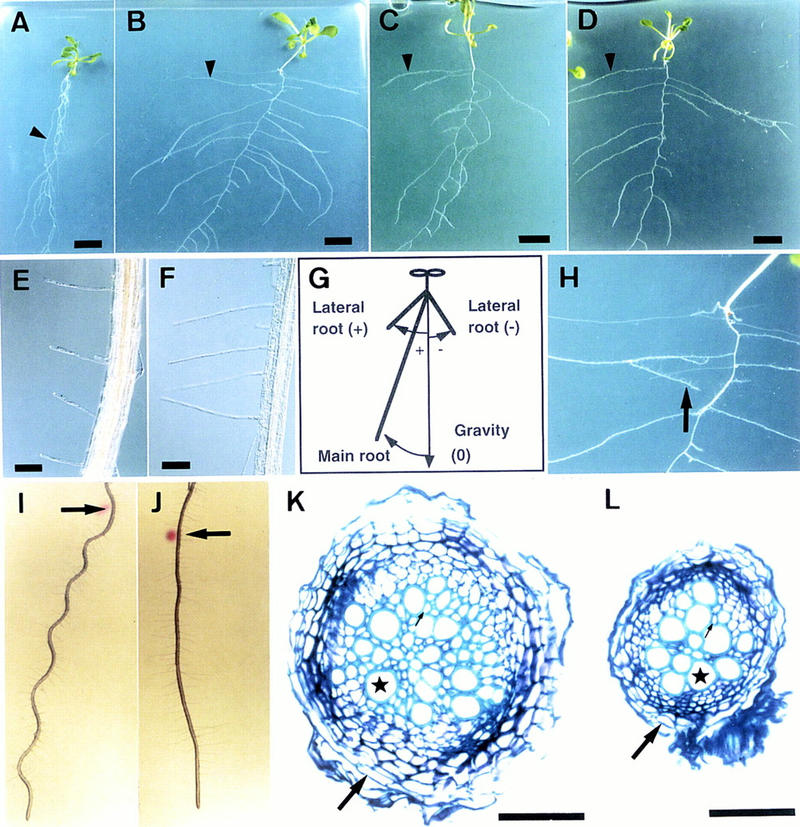Figure 1.

Phenotypes of hy5 mutants. (A–D) Plants at 20 DAG grown on vertically positioned agar plates supplemented with sucrose. Wild-type of Landsberg erecta (Ler) ecotype (A), hy5-1 (B), hy5–Ks50 (C), and hy5-215 (D) are shown. The arrowhead in each panel indicates a lateral root. Scale bars, 10 mm. (E,F) Root hairs of wild-type Ler ecotype (E) and hy5-1 (F). The seedlings were grown on agar plates set in a vertical position. Scale bars, 100 μm. (G) A diagram, indicating how to measure angles formed by roots and gravity orientation. Roots of seedlings elongate on an agar plate set in a vertical position. Plus (+) and minus (−) degrees represent a clockwise angle from the gravity orientation and a counterclockwise angle, respectively (see Table 3). (H) A magnified view of Fig. 2B, showing a secondary lateral root of hy5-1 (arrow). (I,J) Wavy pattern of wild-type of Ler ecotype (I) and hy5-1 (J). Seedlings were grown on an agar plate for 3 days set in a vertical position. Then the plate was tilted to 45° (arrows indicate the positions of root tips at the time of the position change), and the seedlings were grown for 3 days. (K,L) Cellular organization in the secondarily thickened roots of wild-type Ler ecotype (K) and hy5-1 (L). Transverse sections were made at the same position of main roots of seedlings at 20 DAG grown on agar plates supplemented with sucrose and stained with toluidine blue (see Materials and Methods). A well-lignified xylem vessel, a peridremal cell, and a fiber element are indicated by a star, a large arrow, and a small arrow, respectively. Scale bars, 50 μm.
